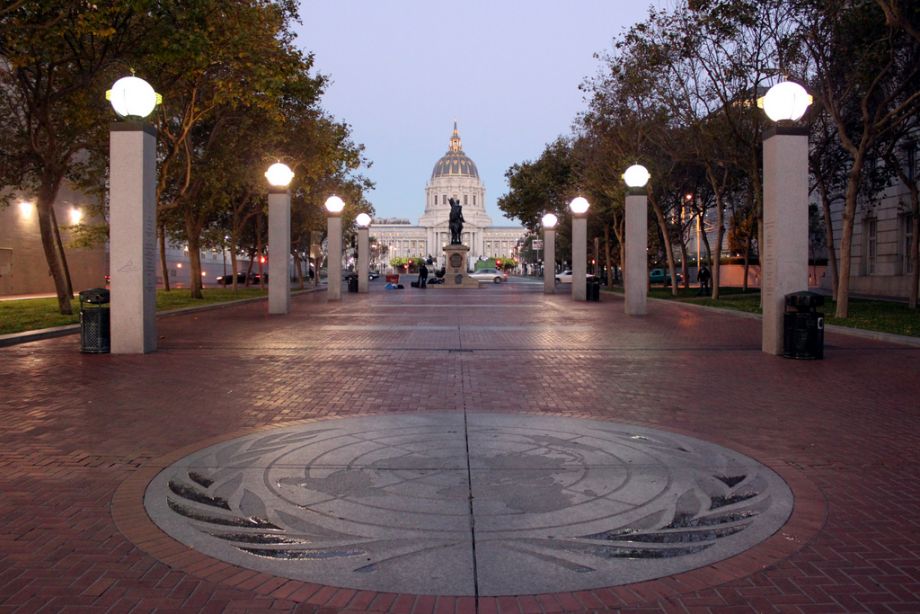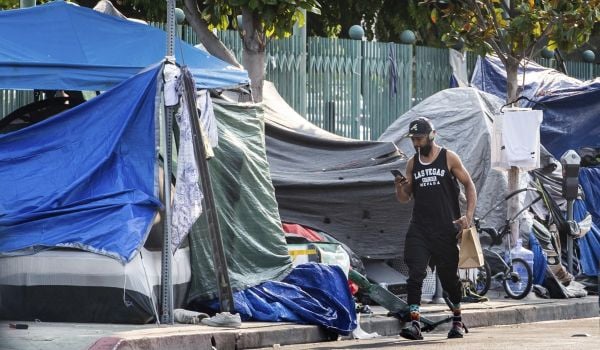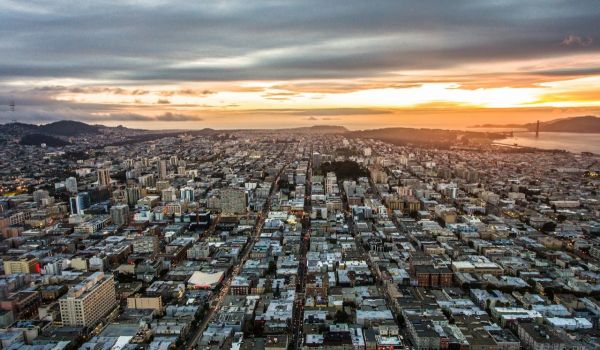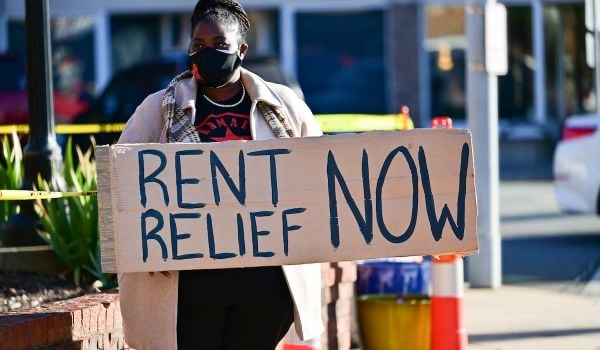San Francisco’s Civic Center neighborhood serves as the city’s front porch, both its seat of government and a microcosm for the booms and busts of a city in the throes of an identity crisis. Here is City Hall, the opera house, the main public library, Twitter’s headquarters and a weekly farmer’s market on United Nations Plaza.
Here too, in the stark expanses between imposing buildings, are scores of unhoused people, sleeping on the ground — a former mayor thought removing benches would shoo the homeless away. Here is a thriving drug trade, with 12,000 hypodermic needles removed from the site just last year.
Now a slate of new initiatives may transform UN and Civic Center Plazas, and the spaces between them, this time with inclusivity as a specific goal. The city met with bidders for a redesign project in January, after Mayor Ed Lee’s office published a proposal that acknowledges past administrations’ failure to make the space safer and more enjoyable for all.
“Design alone cannot be expected to solve social problems, but thoughtful design can be a part of the solution,” reads the proposal. Regarding the removal of benches from both plazas in the 1990s and early 2000s, the document acknowledges, “The result of this stripped environment is spaces that are unwelcoming to everyone, and have achieved minimal reduction in illicit or undesirable behaviors.”
While larger transformations are still a few years away, pop-up exhibitions by the Exploratorium aim to enliven the space today, and partnerships with nonprofits are demonstrating how diverse populations might share the space in peace. In UN Plaza, the Exploratorium has installed four large interactive pieces called the Sound Commons. One challenges visitors to walk across a bed of gravel as quietly as possible. Giant chimes and xylophones let anyone make music, or at least noise.
But what’s really unique about the installations are the monitors minding them. Staff from the nonprofit Hunters Point Family have been hired by the city to talk to visitors, guide them through the installations, and keep the area safe and clean. Nearly all of them were formerly incarcerated, serving life sentences, and are now living in a halfway house.
“They have been really an ideal population to staff these areas because of their emotional intelligence that people usually have to develop if you’re on the prison yard for twenty plus years and you’re not sure that you’re getting out,” says Lena Miller, co-executive director of Hunters Point Family. “You really need to know how to deal with all kinds of people.”
The nonprofit got the contract because of their successful work with Public Works’ Pit Stop program, which provides public toilets, sharps containers and dog waste stations around San Francisco. Hunters Point Family staff serve as attendants for those toilets, both keeping the peace and collecting data.
A tremendous amount of data, says Miller: the demographics of those using the facilities, how long they’re in there, how many flushes. Monitors at UN Plaza are also asked to track many data points for the city: which exhibits are being used and which aren’t, the genders and ages of visitors, reports of graffiti or feces, how many hypodermic needles are collected a day.
Right now they’re keeping notes on a paper spreadsheet, but the nonprofit is collaborating with Public Works to make an app. Like a McDonald’s register, says Miller, but instead of pressing buttons for Big Macs and French fries, they’ll tap feces and needles.
That data helps with both quality control and accountability. It can help point out what’s working and what isn’t, and justify spending public money on the project. City staff walk through the space every day on their way to City Hall, says Miller, and they want to know the project is having an impact. Last month, library officials raised concerns about contributing $100,000 to the Civic Center Commons project. Miller says the data should speak for itself.
The Hunters Point Family monitors are clustered around the Exploratorium exhibits. In the rest of the space, team members from the Downtown Streets Team are keeping the space clean and reaching out to the unhoused. Another nonprofit, Downtown Streets Team engages homeless people to volunteer their time on janitorial and hospitality projects in exchange for case management and a stipend toward basic needs like groceries and rent.
The 11-year-old nonprofit only began operating in San Francisco last year, and the Civic Center was its first site. They’d considered the Mission, the Castro and the Tenderloin, neighborhoods more notoriously associated with homelessness in the public imagination, “but it really felt like being in Civic Center/UN Plaza was a good idea for us because there was an extreme need from an unhoused population there, but there was also a need to change the face of homelessness in the community,” says Brandon Davis, project director for the San Francisco team. “Because tech exists there, government exists there, because small business exists there, and then a very large unsheltered population lives there as well.”
Most of the team members are themselves from the Civic Center/UN Plaza community. In addition to picking up debris, they recruit other homeless people to join the team. Davis says the city has done a good job of treating them as stakeholders, including them in conversations around the civic center redesign.
“It’s been truly uplifting for the city to come to our team members and our participants and show them potential plans for the project area and ask them what they think and what their input is on it,” he says. “That’s been very cool for our folks, who often feel they’re on the outskirts of society.”
Both Miller and Davis stress that these staff are uniquely capable of engaging with all users of the space with compassion and understanding. The city has also fixed up streetlights around the plaza and increased foot patrols by the San Francisco Police Department, but it’s no small contribution the homeless and formerly incarcerated staff make, “which is to keep the peace without a gun, or a badge, or authority,” says Miller. Davis suspects other homeless folks in the plaza are wary of wronging streets team staff that they know are in the same position as them.
“One message that has been clear from all project partners is, we’re all a community here, and regardless of tech worker or homeless or whatever, we will just not allow unsafe things to happen in the project area,” he says.
More installations and exhibits are planned for the plazas while the more permanent designs take shape.
Jen Kinney is a freelance writer and documentary photographer. Her work has also appeared in Philadelphia Magazine, High Country News online, and the Anchorage Press. She is currently a student of radio production at the Salt Institute of Documentary Studies. See her work at jakinney.com.
Follow Jen .(JavaScript must be enabled to view this email address)
















